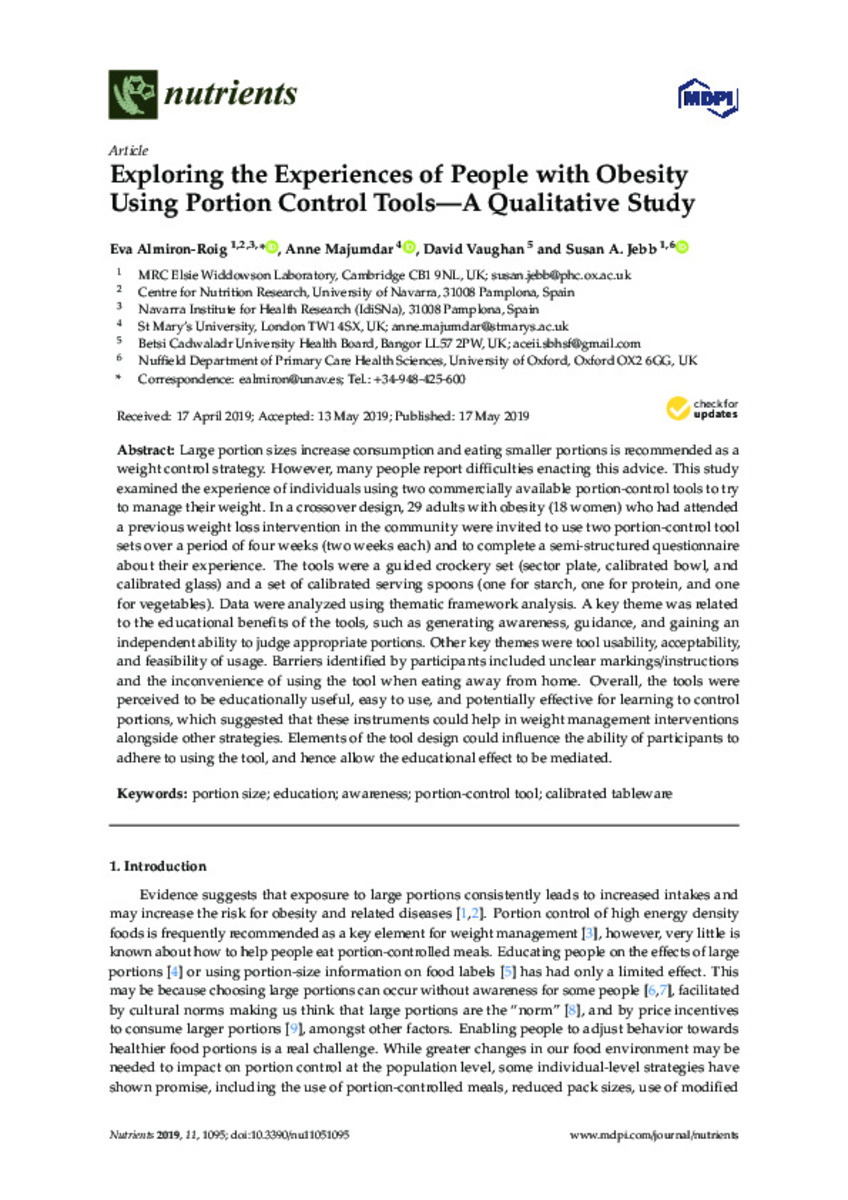Exploring the Experiences of People with Obesity Using Portion Control Tools—A Qualitative Study
Palabras clave :
Materias Investigacion::Ciencias de la Salud::Nutrición y dietética
Awareness
Calibrated tableware
Education
Portion size
Portion-control tool
Fecha de publicación :
2019
Nota:
This article is an open access article distributed under the terms and conditions of the Creative Commons Attribution (CC BY) license (http://creativecommons.org/licenses/by/4.0/).
Cita:
Almiron-Roig, E. (Eva); Majumdar, A. (Anne); Vaughan, D. (David); et al. "Exploring the Experiences of People with Obesity Using Portion Control Tools—A Qualitative Study". Nutrients. 11 (1095), 2019, 1 - 13
Aparece en las colecciones:
Estadísticas e impacto
0 citas en

Los ítems de Dadun están protegidos por copyright, con todos los derechos reservados, a menos que se indique lo contrario.







